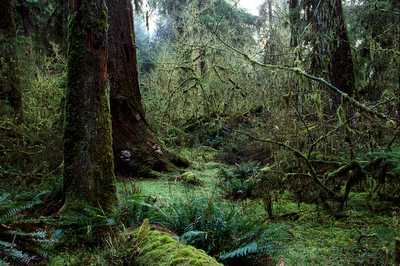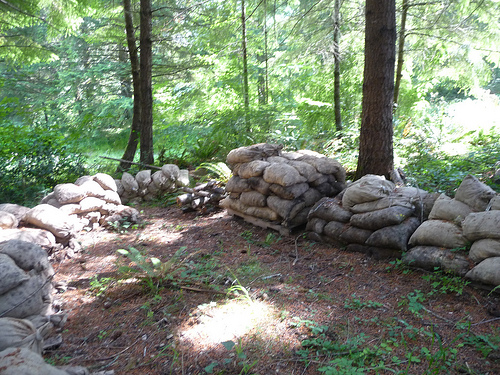 [Electron Micrograph showing the 'internet' of mycelium]
[Electron Micrograph showing the 'internet' of mycelium]
Discussing fungi isn't the first thing that comes to my mind for facilitating stimulating conversation. Although we did discover it's potential as city planners, but in a conversation with one of the Whole Systems Design team the other day, I was directed to the works of Paul Stamets, and completely blown away.
Stamets is a Mycologist, and his research into the fungi Mycelium is creating exciting advancements in bio-remediation, pest control, vaccinations and even energy.
 [Paul Stamets and giant fungi]
[Paul Stamets and giant fungi]
Mycelium, as Stamets says in his 2008 TED talk are the ultimate soil builders. The mother of trees. We are more closely related to fungi then any other kingdom. They are external neurological membranes, and this microbial universe gives rise to a plurality of other organisms. It is earth's natural internet, highly branched with alternative paths that cling to soil, decomposing matter and creating stability. In fact, if you've seen Avatar, this makes me think of the "connection of all things" they spoke of might of been a form of mycelium.
It was this mycelium that 1.3 billion years ago, chemically broke down rocks to create the first soils on earth, forming the foundation for life. 65 million years ago the asteroid hit, fungi survived, which doesn't need light, uses radiation, and because of this characteristic, Stamets suggests this is a strong reason to believe fungi and life exist on other planets.
But what I found to be one of the most compelling characteristics of mycelium is it's capabilities of bio-remediation, or as Stamets has coined "Mycroremediation." I'll spare extreme scientific detail, mostly because I have trouble wrapping my head around it, but experiments have shown mycelium has the ability to breakdown hydrocarbons, transforming them down into carbohydrates. Taking a pile of oil saturated soil infused with the spores, it quickly began to breakdown the pollutants, spawning mushrooms. Insects were soon attracted and laid eggs, spawned, birds fed on insects and brought in seeds, eventually creating a habitat out of toxic waste.
 [Home to the mycelium, Stamets hopes to restore old growth forests using his Life Box]
[Home to the mycelium, Stamets hopes to restore old growth forests using his Life Box]
This has vast bio-remedial possibilities. Using burlap sacks stuffed with wind blown debris and mycelium we can create natural filtration corridors downstream from industrial waste zones. Take them to a brownfield site, and rapidly transform the soil to allow for urban agriculture or park development.
 [Using bags of waste and injected mycelium, you place upstream from industrial waste zones to bio-filtrate pollutants]
[Using bags of waste and injected mycelium, you place upstream from industrial waste zones to bio-filtrate pollutants]
Another fascinating creation of Stamets, in relation to ecological restoration, is the "Life Box." With combination of mycelium, soil, water, mycorrhizal spores, and tree seeds, all contained in a cardboard box, the hope is that old growth forests can be regenerated across the world, while also putting cardboard to good use.
 [The Life Box]
[The Life Box]
Stamets envisions a future interactive zip code system using google earth to track carbon being sequestered by the dispersal of the Life Box, a way to visually track it's success and activate communal involvement. It can also be used for vegetables, as he as done with a delivery system for places like Darfur, a sort of springloaded garden kit for utilization in disaster stuck areas.
Mycelium's use in pest control in and energy are discussed in greater detail in his TED video, but my main interest is it's proven success in soil building and bio-remediation, a topic I'm sure that we'll continue to discuss here at DUS.
